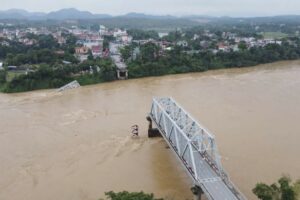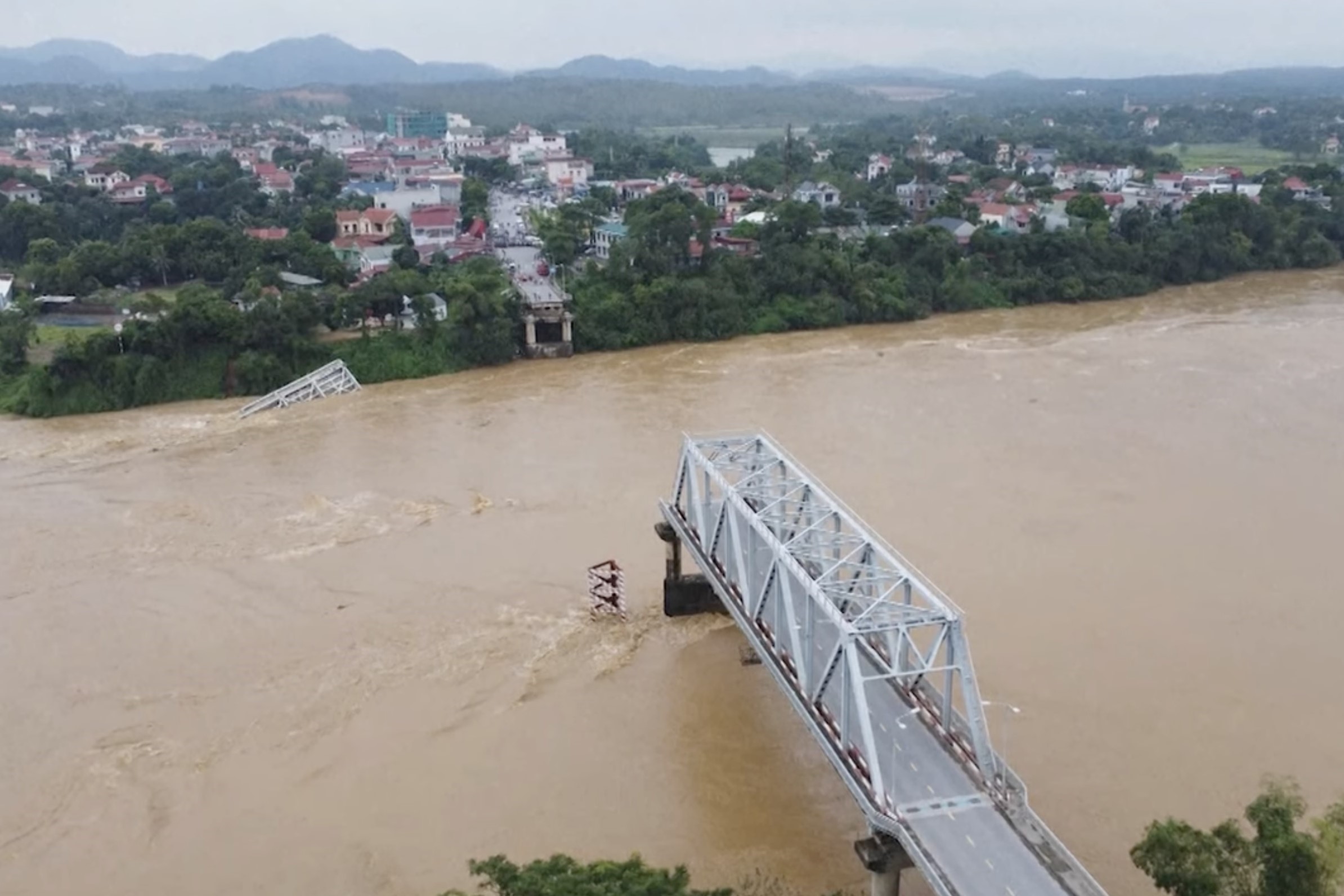 Scour likely underlying cause of destructive Vietnam bridge collapse
Scour likely underlying cause of destructive Vietnam bridge collapse
Super typhoon Yagi has caused the collapse of the Phong Chau bridge into the Red River northwest of Hanoi in Vietnam, leaving 13 people missing.
It was widely reported that the collapse led to 10 cars and two scooters plunging into the river.
Deputy prime minister Ho Duc Phoc was reported to have been tasked with responsibility for the response to the bridge collapse. One span remains standing after the incident and the military has been instructed to build a pontoon bridge at the site of the collapse to keep traffic moving.
Independent bridge consultant with an interest in bridge collapses Richard Fish said the collapse was “likely to be a result of scour, which has taken out an intermediate support in the river”.
Scour is the erosion of riverbeds and banks, which can reduce the security of a bridge’s foundation, often resulting in bridge structural failure if not mitigated quickly.
Fish addedd that while the surviving truss span on the Phong Chau bridge is simply supported, “it seems that the spans that collapsed were continuous albeit still with the same truss arrangement”.
“The integrity of the remaining river pier will also have to be thoroughly assessed,” he continued.
“It is clear that the velocities in the Red River were very high at the time of the collapse, undoubtedly exacerbated by significant run-off from the mountainous area upstream caused by typhoon Yagi.”
Fish went on to say: “The severity of Yagi is, in turn, almost certainly driven by climate change and the more intense rainfall events which are becoming the norm around the globe.
“Scour is already the biggest cause of bridge collapses and will continue to be so; a problem for all bridge owners to try to address in the near future.”
Fish concluded: “The biggest tragedy, however, is that it appears likely that this is another collapse which will have claimed lives – with 13 missing after falling into the river and with slim chances of survival.”
Storms in the winter of 2023/2024 brought fresh attention to the climate resilience of bridges in the UK including because of the closure of the QEII Dartford Crossing during Storm Henk.
Arup fellow Richard Hornby, one of the engineers behind the Queensferry Crossing, spoke to NCE about climate resilient bridge design in January 2024.
Looking at the impact of climate breakdown on bridges in the UK specifically, given the country’s generally very well-designed bridges with long design lives, Hornby said: “The things that will be critical are the scour around foundations [during] flood events. There will be new flooding maps, there will be new hydrological maps and new demands on that.
“That will be the number one the risk associated with climate change as far as UK is concerned, or potential for change.”
Source: https://www.newcivilengineer.com/latest/scour-likely-underlying-cause-of-destructive-vietnam-bridge-collapse-09-09-2024/

